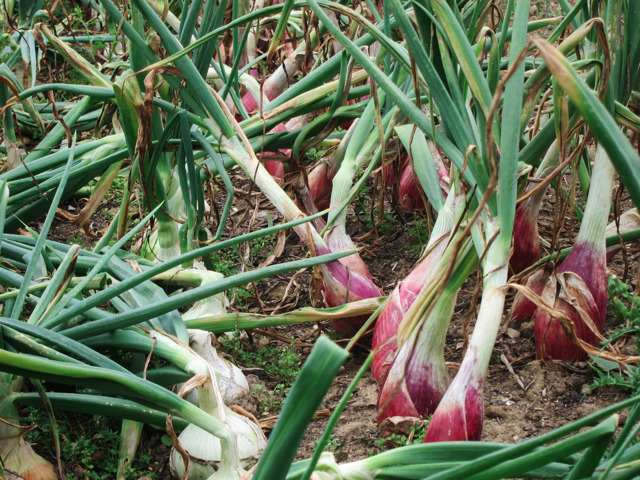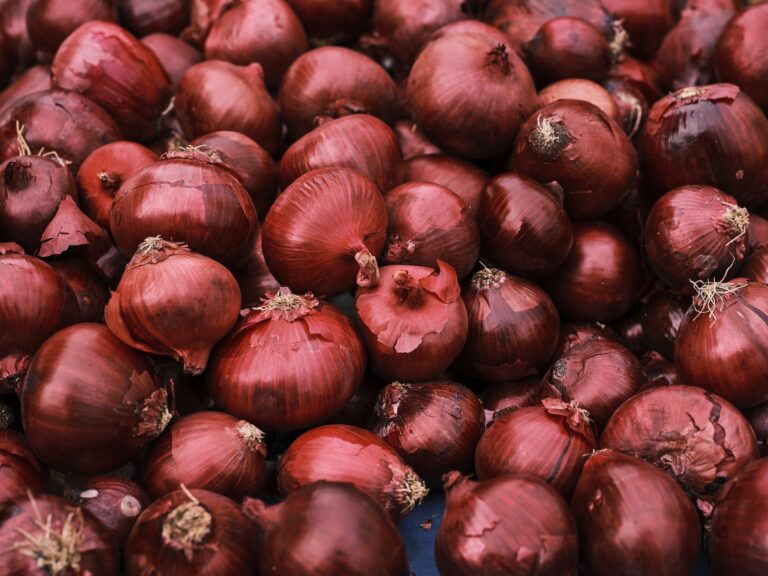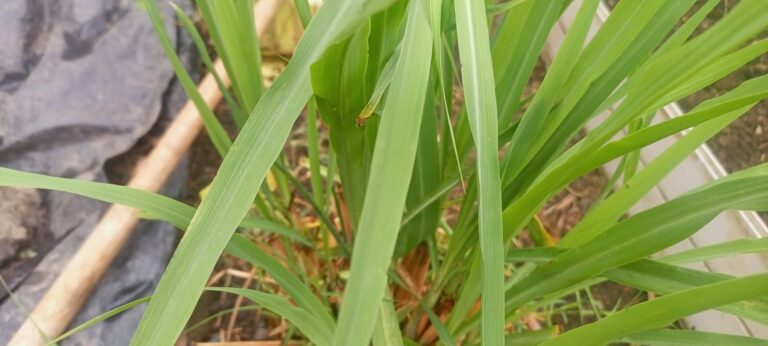How can I control pests and diseases on my onion farm in Kenya?
As an onion farmer in Kenya, pests, and diseases can be a major concern for your crop. These issues can not only reduce your yield but also lead to a significant financial loss. In this article, I’ll be sharing some tips on how to control pests and diseases on your onion farm in Kenya.
1: Identify the Pest or Disease
The first step in controlling pests and diseases is to properly identify them. This can be done by observing the symptoms of the problem, such as leaf discoloration, wilting, or the presence of bugs or fungus. Once you have identified the pest or disease, you can research the best methods for controlling it.
Here’s a list of 10 common pests that can attack onions in Kenya, their characteristics, symptoms, and control methods:
- Thrips: These tiny, winged insects suck the sap from onion leaves, causing them to become discolored and distorted. Thrips are also known to spread viruses, which can further damage the crop. Symptoms of thrips infestation include silver or white discoloration on the leaves, and the presence of small black or brown bugs on the foliage. Control methods include using sticky traps, planting companion crops, and releasing predators such as ladybugs or lacewings.
- Onion maggots: These small, white larvae feed on the roots of onions, causing the plants to wilt and die. Symptoms of onion maggot infestation include wilted plants, yellowing leaves, and the presence of small white larvae in the soil around the base of the plant. Control methods include crop rotation and using physical barriers like row covers.
- Onion aphids: These small, pear-shaped insects suck the sap from onion leaves, causing them to become distorted and discolored. Aphids also secrete a sticky residue called honeydew, which can attract ants and promote the growth of sooty mold. Symptoms of aphid infestation include distorted or curled leaves, yellowing, and the presence of small, soft-bodied insects on the foliage. Control methods include using insecticidal soap or neem oil and encouraging the presence of natural predators such as ladybugs and lacewings.
- Onion thrips: These small, winged insects feed on the leaves and bulbs of onions, causing them to become distorted and discolored. Symptoms of onion thrips infestation include silver or white discoloration on the leaves, and the presence of small, black or brown bugs on the foliage. Control methods include using sticky traps, planting companion crops, and releasing predators such as ladybugs or lacewings.
- Whitefly: These small, white, winged insects feed on the sap of onion leaves, causing them to become yellow and distorted. Symptoms of whitefly infestation include yellowing leaves, distorted growth, and the presence of small white flies on the foliage. Control methods include using insecticidal soap or neem oil and encouraging the presence of natural predators such as ladybugs and lacewings.
- Cutworm: These are caterpillars that feed on the leaves and stems of onions, causing them to wilt and die. Symptoms of cutworm infestation include wilted plants and the presence of small caterpillars on the foliage and soil. Control methods include using insecticides and handpicking the worms from the plants.
- Leek moth: The adult moths lay their eggs near the base of onion leaves, and the caterpillars feed on the foliage, weakening the plants and making them more susceptible to disease. Symptoms of leek moth infestation include holes in leaves and the presence of small caterpillars. Control methods include using insecticides, crop rotation, and handpicking the caterpillars from the plants.
- Stem borer: These are moths that lay their eggs on the stem of the onions and when the larvae hatch, they bore into the stem, causing the plant to wilt and die. Symptoms of stem borer infestation include wilted plants and the presence of small holes on the stem. Control methods include using insecticides, crop rotation, and removing the infected plant.
- Onion fly: The adult flies lay their eggs on the soil near the base of the onion plants, and the maggots feed on the roots, causing the plants to wilt and die. Symptoms of onion fly infestation include wilted plants, yellowing leaves, and the presence of small maggots in the soil around the base of the plant. Control methods include crop rotation, using physical barriers like row covers, and using nematodes, which are natural predators of the maggots.
- Root-knot nematodes: These are microscopic worms that feed on the roots of onions, causing them to become distorted and stunted. Symptoms of root-knot nematode infestation include stunted growth, yellowing leaves, and the presence of small galls or knots on the roots. Control methods include crop rotation, using resistant varieties of onions, and using nematicides.
| Pest | Characteristics | Symptoms | Control Methods |
|---|---|---|---|
| Thrips | Tiny, winged insects that suck the sap from onion leaves | Silver or white discoloration on the leaves, presence of small black or brown bugs on the foliage | Sticky traps, planting companion crops, releasing predators such as ladybugs or lacewings |
| Onion maggots | Small, white larvae that feed on the roots of onions | Wilted plants, yellowing leaves, presence of small white larvae in the soil around the base of the plant | Crop rotation, using physical barriers like row covers |
| Onion aphids | Small, pear-shaped insects that suck the sap from onion leaves | Distorted or curled leaves, yellowing, presence of small, soft-bodied insects on the foliage | Insecticidal soap or neem oil, encouraging the presence of natural predators such as ladybugs and lacewings |
| Onion thrips | Small, winged insects that feed on the leaves and bulbs of onions | Silver or white discoloration on the leaves, presence of small, black or brown bugs on the foliage | Sticky traps, planting companion crops, releasing predators such as ladybugs or lacewings |
| Whitefly | Small, white, winged insects that feed on the sap of onion leaves | Yellowing leaves, distorted growth, presence of small white flies on the foliage | Insecticidal soap or neem oil, encouraging the presence of natural predators such as ladybugs and lacewings |
| Cutworm | Caterpillars that feed on the leaves and stems of onions | Wilted plants, presence of small caterpillars on the foliage and soil | Insecticides and handpicking the worms from the plants |
| Leek moth | Adult moths lay their eggs near the base of onion leaves, and the caterpillars feed on the foliage | Holes in leaves, presence of small caterpillars | Insecticides, crop rotation, handpicking the caterpillars from the plants |
| Stem borer | Moths lay their eggs on the stem of the onions and when the larvae hatch, they bore into the stem | Wilted plants, presence of small holes on the stem | Insecticides, crop rotation, removing the infected plant |
| Onion fly | Adult flies lay their eggs on the soil near the base of the onion plants, and the maggots feed on the roots | Wilted plants, yellowing leaves, presence of small maggots in the soil around the base of the plant | Crop rotation, using physical barriers like row covers, using nematodes |
| Root-knot nematodes | Microscopic worms that feed on the roots of onions | Stunted growth, yellowing leaves, presence of small galls or knots on the roots | Crop rotation, using resistant varieties of onions, using nematicides |
Here’s a list of 10 common diseases that can affect onions in Kenya, their causes, symptoms, and control methods:
- Downy mildew: This is a fungal disease that affects the leaves of onions, causing them to become yellow and distorted. The fungus thrives in cool, damp conditions. Symptoms include yellowing of leaves, with a white, fuzzy mold growth on the undersides of the leaves. Control methods include using fungicides, crop rotation and ensuring good air circulation in the field.
- White rot: This is a fungal disease that affects the bulbs of onions, causing them to rot and become unmarketable. The fungus thrives in moist soils. Symptoms include rotten bulbs with a white, cottony growth on them. Control methods include crop rotation, using resistant varieties of onions and using fungicides.
- Purple blotch: This is a fungal disease that affects the leaves of onions, causing them to become discolored and distorted. The fungus thrives in warm, humid conditions. Symptoms include purple or brown spots on the leaves, and yellowing and wilting of the foliage. Control methods include using fungicides, crop rotation, and ensuring good air circulation in the field.
- Botrytis leaf blight: This is a fungal disease that affects the leaves of onions, causing them to become discolored and distorted. The fungus thrives in cool, damp conditions. Symptoms include brown spots on the leaves, and yellowing and wilting of the foliage. Control methods include using fungicides, crop rotation, and ensuring good air circulation in the field.
- Stemphylium leaf blight: This is a fungal disease that affects the leaves of onions, causing them to become discolored and distorted. The fungus thrives in warm, humid conditions. Symptoms include brown spots on the leaves, and yellowing and wilting of the foliage. Control methods include using fungicides, crop rotation, and ensuring good air circulation in the field.
- Bacterial leaf blight: This is a bacterial disease that affects the leaves of onions, causing them to become discolored and distorted. The bacteria thrive in warm, humid conditions. Symptoms include brown or black spots on the leaves, and yellowing and wilting of the foliage. Control methods include using copper-based fungicides and crop rotation.
- Fusarium basal rot: This is a fungal disease that affects the bulbs of onions, causing them to rot and become unmarketable. The fungus thrives in warm soils. Symptoms include rotten bulbs with a brown or black rot on them. Control methods include crop rotation, using resistant varieties of onions and using fungicides.
- Pink root: This is a fungal disease that affects the roots of onions, causing them to become distorted and stunted. The fungus thrives in cool soils. Symptoms include stunted growth, yellowing leaves, and the presence of small galls or knots on the roots. Control methods include crop rotation, using resistant varieties of onions, and using fungicides.
- Rhizoctonia basal rot: This is a fungal disease that affects the bulbs of onions, causing them to rot and become unmarketable. The fungus thrives in warm, humid conditions. Symptoms include rotten bulbs with a brown or black rot on them. Control methods include crop rotation, using resistant varieties of onions and using fungicides.
- Purple blotch: This is a fungal disease that affects the leaves of onions, causing them to become discolored and distorted. The fungus thrives in warm, humid conditions. Symptoms include purple or brown spots on the leaves, and yellowing and wilting of the foliage
| Disease | Causes | Symptoms | Control Methods |
|---|---|---|---|
| Downy mildew | Fungal disease caused by the fungus Peronospora destructor | Yellowing of leaves, white, fuzzy mold growth on the undersides of the leaves | Fungicides, crop rotation, ensuring good air circulation in the field |
| White rot | Fungal disease caused by the fungus Sclerotium cepivorum | Rotten bulbs with a white, cottony growth on them | Crop rotation, using resistant varieties of onions, using fungicides |
| Purple blotch | Fungal disease caused by the fungus Alternaria porri | Purple or brown spots on the leaves, yellowing and wilting of the foliage | Fungicides, crop rotation, ensuring good air circulation in the field |
| Botrytis leaf blight | Fungal disease caused by the fungus Botrytis squamosa | Brown spots on the leaves, yellowing and wilting of the foliage | Fungicides, crop rotation, ensuring good air circulation in the field |
| Stemphylium leaf blight | Fungal disease caused by the fungus Stemphylium vesicarium | Brown spots on the leaves, yellowing and wilting of the foliage | Fungicides, crop rotation, ensuring good air circulation in the field |
| Bacterial leaf blight | Bacterial disease caused by the bacteria Xanthomonas campestris | Brown or black spots on the leaves, yellowing and wilting of the foliage | Copper-based fungicides, crop rotation |
| Fusarium basal rot | Fungal disease caused by the fungus Fusarium oxysporum | Rotten bulbs with a brown or black rot on them | Crop rotation, using resistant varieties of onions, using fungicides |
| Pink root | Fungal disease caused by the fungus Pyrenochaeta Terrestris | Stunted growth, yellowing leaves, presence of small galls or knots on the roots | Crop rotation, using resistant varieties of onions, using fungicides |
| Rhizoctonia basal rot | Fungal disease caused by the fungus Rhizoctonia solani | Rotten bulbs with a brown or black rot on them | Crop rotation, using resistant varieties of onions, using fungicides |
| Purple blotch | Fungal disease caused by the fungus Alternaria porri | Purple or brown spots on the leaves, yellowing and wilting of the foliage | Fungicides, crop rotation, ensuring good air circulation in the field |
2: Use Integrated Pest Management (IPM)
Integrated Pest Management (IPM) is a comprehensive approach to controlling pests and diseases. It involves using a combination of different methods, such as biological control, cultural control, and chemical control. By using IPM, you can reduce the need for chemical pesticides, which can be harmful to the environment.
For example, one of the common pests that attack onions in Kenya is the thrips. To control thrips, you can use a combination of cultural and biological control methods, such as planting companion crops, using sticky traps, and releasing predators such as ladybugs or lacewings.
Another example is the onion maggot. To control onion maggots, you can use cultural control methods such as crop rotation, and using physical barriers like row covers.
3: Use Chemical Pesticides Only as a Last Resort
While chemical pesticides can be effective at controlling pests and diseases, they should be used as a last resort. This is because chemical pesticides can be harmful to the environment and can lead to the development of pesticide-resistant pests.
When using chemical pesticides, be sure to follow the label instructions carefully and only use the minimum amount necessary. Also, consider alternative methods such as neem oil or other bio-pesticides.
4: Practice Good Farming Practices
Good farming practices, such as proper irrigation, fertilization, and crop rotation, can also help to control pests and diseases. For example, by providing your onions with the right amount of water and nutrients, you can help to keep them healthy and strong, making them less susceptible to pests and diseases.
Additionally, crop rotation can help to reduce the build-up of pests and diseases in the soil by changing the type of crop grown in a specific area each year.
5: Monitor Your Crop Regularly
Finally, it is important to regularly monitor your crop for pests and diseases. This can be done by regularly inspecting your onions for symptoms of pests or diseases and taking action as soon as a problem is identified.
In conclusion, pests and diseases can be a major concern for onion farmers in Kenya. By properly identifying pests and diseases, using integrated pest management, using chemical pesticides only as a last resort, practicing good farming practices, and monitoring your crop regularly, you can effectively control pests and diseases and protect your onion crop. Remember to always consult with local experts for the best practices and recommendations for your specific region.







